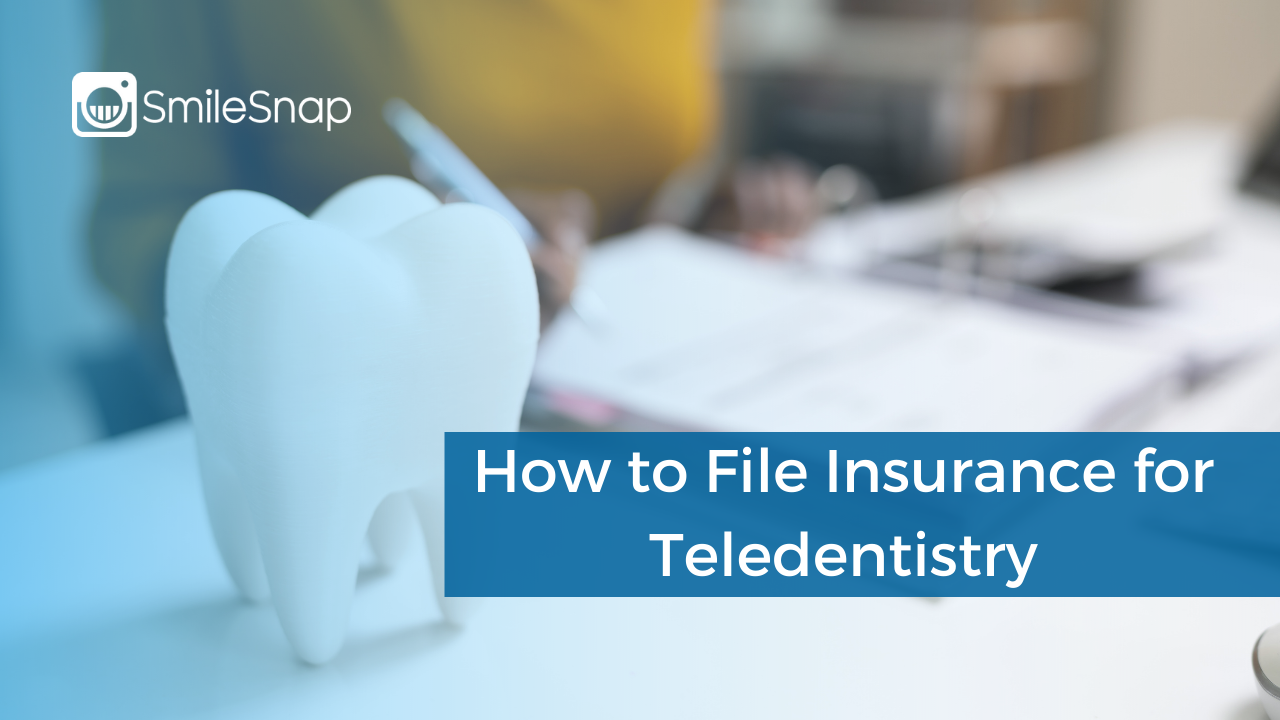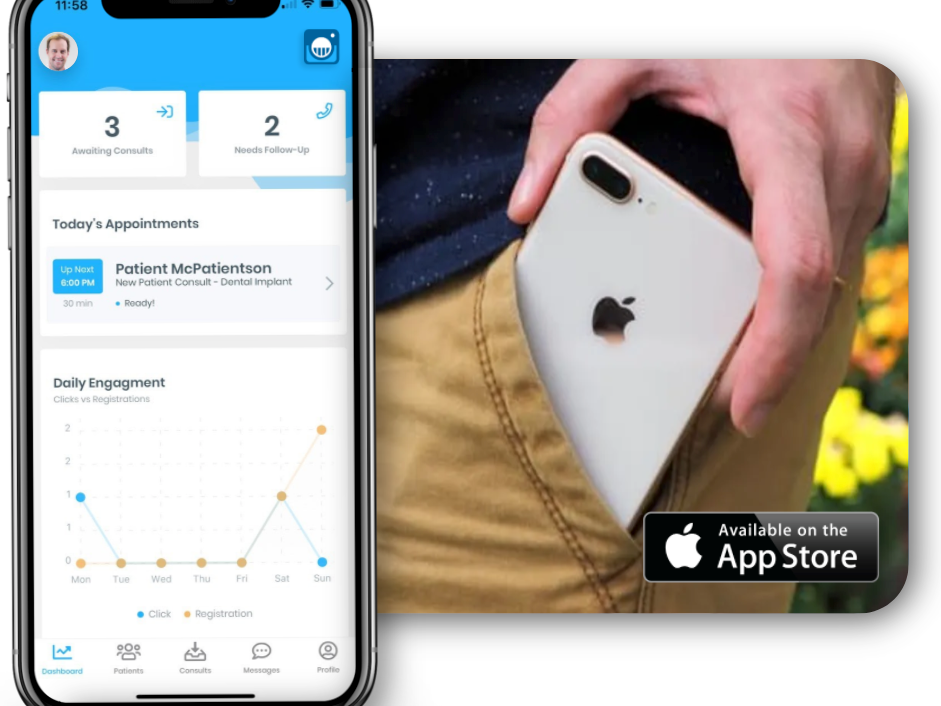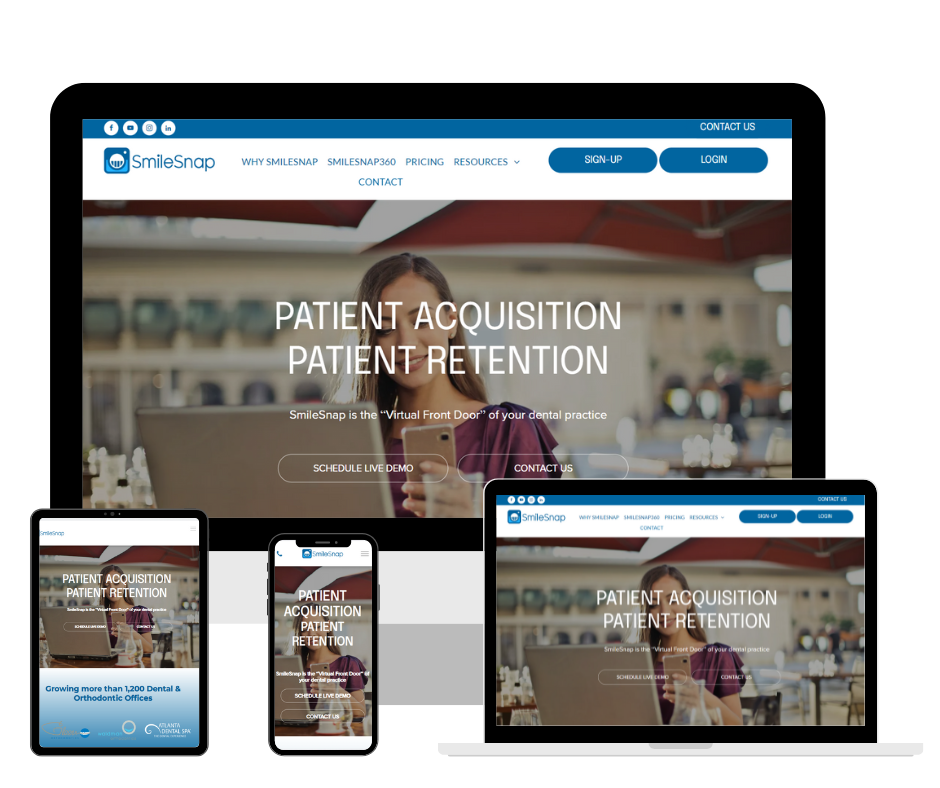How to File Insurance for Teledentistry

If there’s a lesson to be learned in recent times, it’s that the state of the world and medical practice can be unpredictable. Something that medical professionals can predict is that humans require routine maintenance to prevent and treat illness. High-quality dental care should be pandemic-proof.
Modern times call for modern advancements. Convenience, sustainable health, and safety are encompassing themes in today’s consumer culture. Telehealth thrives today and will continue to expand as the population grows.
For most of the COVID-19 pandemic, many dentists and patients have been living with the same fear of exposing themselves to the virus or mutated versions. Many dental offices across the country’s doors were closed for non-emergency procedures. However, that shouldn’t diminish the demand for good preventative dental care and twice-annual exams. This shutdown affected dental patients around the world and the highly trained dental professionals that serve them. This drastic change caused great stress and grief for both patients and medical employees.
Maintaining at least six feet away from another person can make dentistry difficult, but not impossible with teledentistry. Teledentistry is a virtual dental visit allowing patients to receive dental care without being in the exact location. This novel concept can happen in real-time or be asynchronous. Utilizing teledentistry to the highest degree depends on the laws in your particular state and includes usage of modern technology pertaining to:
- Transferring electronic knowledge, imaging, and communication
- Interactive and metachronous audio and video
- Storing and forwarding data and education
- Supporting dental care presentation, analysis, deliberation, and treatment
Insurance Reimbursement
The American Dental Association recognizes and expects dentists to use teledentistry technologies and methods to the same extent that services would be covered if they were provided in person. This ensures quality care for the patient. For this reason, dental benefit plans and both private and public third-party programs should provide coverage for services. Medicare and Medicaid usually cover some or all costs associated with teledentistry.
Dentists may invoice insurance companies in the same way they bill when patients visit in person. The following still applies to both in-person and teledentistry consultations:
- Deductibles
- Co-Pays
- Co-Insurance Costs
- Annual Maximums
- Restrictions
It’s always best practice to contact insurance providers for more details.
Which States Allow Reimbursement for Teledentistry?
Teledentistry laws, rules, and regulations are constantly evolving. About half of the states have adopted reimbursement policies related to teledentistry through private and public payer policies. Coverage and laws vary from state to state. Some conditions in states are stricter than others. If you do not live in a state that forces teledentistry compliance on private and public insurance providers, you may want to do some research on your specific state to see what will be covered.
Medicare
Medicare is a federal healthcare program. It protects citizens from 65 years and older and patients with disabilities. Medicare teledentistry coverage is limited because Medicare only covers dental services received in a hospital. Medicare typically does not cover most dental care or procedures but will partially cover two-way video conferencing if the visit fits the limited approved list of needs.
There are many supplemental Medicare plans available that may help cover teledentistry. Medicare Part C, or Medicare Advantage, covers hospital and doctor’s office visits, including dental. Many Medicare Advantage plans also cover prescriptions, but this differs from state to state. Medicare Part C should cover telehealth visits in most states because it is considered equivalent to an appointment in the dentist’s office. Teledentistry can translate to paying less out-of-pocket for Medicare patients with the luxury of saving time in the comfort of their own homes.
Medicaid
Medicaid provides coverage for families and individuals with low incomes and is a joint national and state government program. The 50 different Medicaid programs coverage varies from state to state. Some states have more comprehensive coverage than others.
Medicaid typically covers teledentistry that is live, synchronous videos between dentist and patient and equates coverage to an in-person visit. As teledentistry rises in demand, more states will necessitate adopting more guidelines and regulations to supervise this positive influx in modern medicine. If you are one of the dentists that provide Medicaid, you may be interested in offering your patients the option of teledentistry.
How Can Teledentisty Help Build Your Practice?
Teledentistry provides dental professionals and patients more flexibility and preparation without sacrificing quality care or insurance coverage. Dentists and oral surgeons can take advantage of teledentistry and utilize it to:
- Perform dental exams
- Digitally read and store x-rays
- Consult in real-time or asynchronously
- Teach patients about good oral hygiene
How Can Teledentistry Benefit Your Patients?
Patient retention is the foundation of a successful dental practice. Patients continue to come back to their same dentist when they are satisfied with their experience and results. When adults were surveyed about why they avoided the dentist, they mentioned three pinnacle factors: convenience, fear, and cost.
Time is considered one of the most valuable assets because it is something that people can never get back. Incapability of finding a convenient time or location impacted 19% of adult consumers who did not visit the dentist regularly. Teledentistry allows patients to access dental offices anywhere and at any time. This means that patients do not have to employ sick days or paid time off for a simple dental consultation or to review lab work or x-rays. Patients can easily fit a 20-minute virtual visit into their busy schedules at home, work, or anywhere in between.
The younger generations have become so busy that they require modes of communication that are convenient and make them feel less intimidated. Recent research suggests that 70% of patients are more comfortable interacting with their healthcare providers via text, email, or video rather than visiting with them face-to-face. Teledentistry visits provide the same level of success as in-office visits without sacrificing freedom and time. Patients do not have to compromise health or convenience with teledentistry.
It’s no secret. Dental professionals are among the most feared health professionals. The concept of metal tools aggressively scraping against gums and drills invading the jaw are nightmare mental images. Myths about dentists are perpetuated in the media and even cartoons marketed towards children. In a recent survey, 61% of patients around the globe indicated that they suffer from dental anxiety and fear.
Unfortunately, sedation dentistry can’t be given over video or phone to ease nervousness and fear, but teledentistry may be the next best thing. Teledentistry makes it easier for dental professionals to build genuine rapport.
The cost of dental care causes potential clients to evade the dentist’s office. Unfortunately, many Americans do not have dental insurance, and seeing the dental bill can be daunting. Thankfully, teledentistry is typically more affordable than in-office visits for patients who don’t have insurance.
If your medical insurance does cover dental (like Medicare Advantage or most Medicaid programs), teledentistry should be a part of your program. Most HSA (Health Savings Account) programs can be used to pay for telehealth services because telehealth visits are considered equivalent to visiting the doctor in person.
The Future of Teledentistry is Now
Think outside of the brick-and-mortar box. Teledentistry will continue to make tremendous leaps and bounds. Laws will continue to change as the world pioneers into telehealth. Don’t be behind your peers. Ready to provide teledentistry services that are seamless, affordable, and easy to use?
Schedule a Demo today.
Sign Up for SmileSnap Today!
Register for Smilesnap Now!


